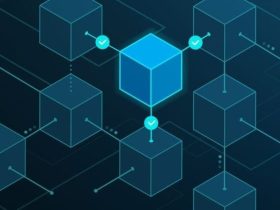In today’s rapidly evolving artificial intelligence landscape, breakthroughs emerge across cybersecurity, cryptography, global policy, conversational agents, and intellectual property protection. From AI-driven cyber threats to historic code-breaking feats, and from OpenAI’s democratic outreach to chatbots prognosticating the next pontiff, this edition of AI Dispatch: Daily Trends and Innovations brings you incisive analysis and commentary on the most impactful developments of May 7, 2025. As AI weaves deeper into industry, governance, and society, understanding these trends—and their broader implications—becomes essential for technologists, executives, and policy-makers alike.
1. Rogue AI Agents Challenge Identity Security Frameworks
Recent reporting highlights a surge in AI-driven autonomous agents exploited by adversaries to bypass traditional cybersecurity safeguards. These “AI agents” can learn target environments, impersonate legitimate user behavior, and orchestrate multi-stage breaches without human oversight. Conventional identity verification measures—passwords, multi-factor authentication, and static behavioral analytics—struggle to contain these adaptive threats.
Key Insight: Security architects must evolve from perimeter defenses to dynamic, AI-augmented identity governance, leveraging continuous verification and real-time anomaly detection.
Analysis & Opinion:
The rise of autonomous AI agents signifies a paradigm shift: attackers no longer operate manual tools but deploy self-learning systems. Organizations should adopt zero-trust architectures infused with advanced machine learning models capable of profiling both benign and malicious agent behaviors. Moreover, cooperation between security vendors and regulatory bodies is vital to standardize protocols for AI-based identity attestations. Failing to address these gaps risks a future where cybercriminal networks deploy fleets of coordinated AI agents at scale.
Source: Axios
2. Modern AI Deciphers World War II’s Enigma in Minutes
Experts report that contemporary AI models, armed with teraflops of processing power and sophisticated natural language understanding, can crack messages encoded by the famed Enigma machine in as little as 13 minutes using 2,000 virtual servers. This contrasts sharply with the original wartime effort, which relied on electro-mechanical “bombes” and human ingenuity to reduce decryption time from months to days.
Key Insight: While historical ciphers fall prey to brute-force AI attacks, modern cryptographic standards remain robust—yet must anticipate future threats like quantum computing.
Analysis & Opinion:
This retrospective demonstration underscores AI’s unprecedented computational capabilities. It also offers a cautionary tale for today’s encryption schemes: as algorithms grow more powerful, the security of public-key infrastructures (like RSA) must be reevaluated in light of both AI-driven brute-force attacks and impending quantum breakthroughs. The cryptography community should accelerate research into post-quantum algorithms and AI-resistant protocols, ensuring that history does not repeat itself on the digital battlefield.
Source: The Guardian
3. OpenAI for Countries: Exporting Democratic AI Values
OpenAI’s newly unveiled “OpenAI for Countries” initiative aims to democratize access to advanced AI by partnering with governments to deploy localized ChatGPT data centers. The program focuses initially on healthcare diagnostics and educational tools, positioning itself as a counterbalance to authoritarian AI deployments. OpenAI’s transition to a public benefit corporation further underscores its commitment to embedding democratic principles—transparency, human-centered design, and equitable governance—into AI ecosystems worldwide.
Key Insight: Geopolitical competition in AI is intensifying; democratic nations must collaborate to build interoperable, ethically aligned AI infrastructures to preserve open societies.
Analysis & Opinion:
By anchoring AI services in regional data centers, OpenAI addresses data sovereignty concerns and tailors models to local linguistic and cultural contexts—an essential step for meaningful adoption. However, the concept of “democratic AI” invites scrutiny: how will OpenAI ensure accountability, prevent misuse, and align with diverse regulatory regimes? Success will hinge on robust multi-stakeholder governance involving civil society, industry, and policymakers. Ultimately, this initiative could set a template for responsible AI diplomacy in an era of digital statecraft.
Source: Axios
4. Chatbots’ Papal Predictions: A Novel Use Case
In a lighter yet intriguing development, leading LLMs—ChatGPT, Google’s Gemini 1.5, xAI’s Grok-2, Anthropic’s Claude, and others—were queried on the likely successor to Pope Francis. Predictions centered on Cardinal Pietro Parolin and Cardinal Luis Antonio Tagle, with models offering nuanced reasoning about geopolitical representation, doctrinal continuity, and progressive versus conservative leanings within the College of Cardinals.
Key Insight: Beyond practical applications, LLMs can surface structured analyses on opaque decision-making processes, offering stakeholders fresh perspectives on complex, closed-door events.
Analysis & Opinion:
While AI chatbots can reflect public sentiment and historical patterns, their “hallucinations” and training data cutoffs limit real-time accuracy. Nevertheless, this exercise showcases generative AI’s potential to digest vast biographical, theological, and geopolitical factors to inform stakeholder discussions. For institutions like the Vatican, carefully curated AI briefs could complement traditional intelligence, enhancing transparency and strategic planning—provided users maintain healthy skepticism and cross-validate AI outputs.
Source: Euronews Next
5. Jumptuit Secures Trademark Protection in China
Jumptuit, a rising AI search-assistant startup, has been awarded trademarks for its logo and brand in China as part of its international IP protection strategy. This move not only shields Jumptuit from brand dilution and counterfeiting but also signals confidence in its long-term commitment to the Chinese market—a region pivotal for AI talent, data, and commercial partnerships.
Key Insight: As AI startups scale globally, proactive intellectual property management becomes a competitive differentiator, protecting innovations and reassuring investors.
Analysis & Opinion:
Trademark awards in stringent jurisdictions like China reflect rigorous examination and underscore Jumptuit’s credibility. For AI ventures, safeguarding IP assets—trademarks, patents, trade secrets—must parallel technological development. Legal teams should collaborate with R&D to align patent filings with evolving product roadmaps, while brand teams ensure consistent trademark coverage in key markets. In an industry where first-mover advantage can be fleeting, strong IP portfolios bolster valuation, deter infringers, and underpin cross-border expansion.
Source: PR Newswire
Conclusion
Today’s AI innovations span protective measures against autonomous cyber threats, the deconstruction of historic ciphers, the export of democratic AI values, imaginative LLM use cases, and strategic IP maneuvers. Together, these stories illustrate AI’s dual nature: as a tool of unprecedented capability and a catalyst demanding new frameworks in security, ethics, governance, and law. As practitioners and observers of this dynamic field, staying ahead requires not only technical acumen but also critical reflection on AI’s societal impacts. In tomorrow’s briefing, we will continue to decode these trends, spotlight emerging technologies, and offer actionable insights for navigating the AI frontier.















Got a Questions?
Find us on Socials or Contact us and we’ll get back to you as soon as possible.